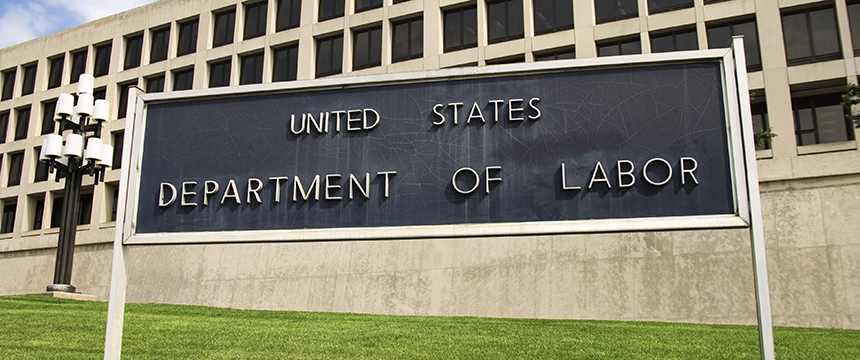The Department of Labor Returns to the Totality-of-the-Circumstances Test for Worker Classification

On January 9, 2024, the United States Department of Labor (DOL) issued its long-awaited final rule (“Final Rule”) regarding worker classification under the Fair Labor Standards Act (FLSA or the “Act”).
The Final Rule—which takes effect March 11, 2024—outlines the DOL’s “new” test for determining whether a worker is an employee (and is covered by the Act’s overtime and minimum wage protections) or an independent contractor for purposes of the FLSA. Misclassification is an especially important issue in the franchising world, where the unique relationship between a franchisor and franchisee can sometimes lead to allegations that the two are in an employment relationship. While the concept of franchising is built on the intent to not create such a relationship, a franchisor that exerts too much control may find itself the target of such allegations and at risk of being required to provide overtime, workers’ compensation, and other benefits to its “franchisees.”
How much control is too much, therefore, is critically important for franchisors to understand. While the Final Rule is not itself “controlling” precedent, it reflects the DOL’s take on worker classification, which courts and other stakeholders use as guidance when addressing classification questions.
- What’s Old Is (Officially) New Again: The Final Rule Returns to a Multi-Factorial “Totality of Circumstances” Analysis
As we previewed when covering the DOL’s proposed version of the Final Rule in 2022, “what’s old is new again.” The Final Rule largely jettisons the Trump Administration DOL’s short-lived guidance on worker classification under the FLSA, which focused on control and opportunity for profit or loss and returns to the previous “totality of circumstances” approach.
Under this approach, six factors are considered:
- opportunity for profit or loss depending on managerial skill;
- investments by the worker and the potential employer;
- degree of permanence of the work relationship;
- nature and degree of control;
- extent to which the work performed is an integral part of the potential employer’s business; and
- skill and initiative.
None of these factors carries any pre-determined weight, none are dispositive, and other circumstances indicative of economic dependence may also be considered.
- The Final Rule Is Widely Viewed as Employee-Friendly, But Doesn’t Go as Far as the “ABC Test”
The Final Rule’s holistic but murky analysis departs from the Trump-era rule’s focus on the two “core factors” (i.e., control and opportunity for profit and loss) and is widely seen as having more of a pro-worker bend. The DOL’s Final Rule FAQ page reinforces the practical challenge of classifying many workers as independent contractors. For example, the DOL considers “integral part of the business” to mean “critical, necessary, or central to the potential employer’s principal business”—a broad formulation likely covering a myriad of services. By contrast, the prior rule had effectively eliminated the “integral part” factor, finding it irrelevant to economic dependence and even misleading in some cases.
Yet the Final Rule does not go as far as the stricter “ABC” test—which starts from a presumption of employment status—and governs some state wage and hour laws such as in California and New Jersey. Employers in states with stricter rules must meet whichever standard provides the greatest protection for workers.
Regardless of the analysis applied, remember that workers cannot “waive” their status as an employee and voluntarily elect to be an independent contractor.
- Highly Regulated Industries Take Note
The Final Rule purports to address the concerns that compliance with “legal obligations, safety or health standards, or requirements to meet contractual or quality control obligations may indicate control[.]” The DOL sought to address this concern by stating “actions taken by the potential employer for the sole purpose of complying with a specific, applicable Federal, State, Tribal, or local law or regulation are not indicative of control.” However, the DOL makes clear that anything going “beyond compliance” with these laws or regulations potentially indicates control—a distinction likely to be litigated in misclassification disputes.
- Bottom Line: Franchisors Must be Cautious of the Restrictions and Controls it Places Over Franchisees.
Under the Final Rule’s pro-employee guidance, it behooves franchisors to proceed with caution when creating policies and guidelines for franchisees. Franchisors should ask themselves (among other key questions relevant to the Final Rule’s six-factor test):
- Does the franchise system in question require a franchise to make entrepreneurial decisions or capital investments suggesting operation of an independent business?
- Can the franchisee hire and fire its own employees?
- Does the franchisor set the franchisee’s schedule, supervise their performance, or control the economic aspects of the relationship (like setting rates for their services)? Importantly, even the reserved (but unexercised) right to control these things can suggest employee status.
- Is the function that the franchisee performs critical, necessary, or central to the franchisor’s principal business?
- Is the franchisee dependent on training from the franchisor to perform the work? Is the worker using specialized skills in connection with business-like initiative?
Franchisors uncertain about their guidelines and policies should contact their legal counsel for advice. While the Final Rule is in many ways a return to the familiar, its issuance serves as an important reminder that franchisors must navigate an ever-changing landscape that can have significant legal repercussions if they are not careful.


